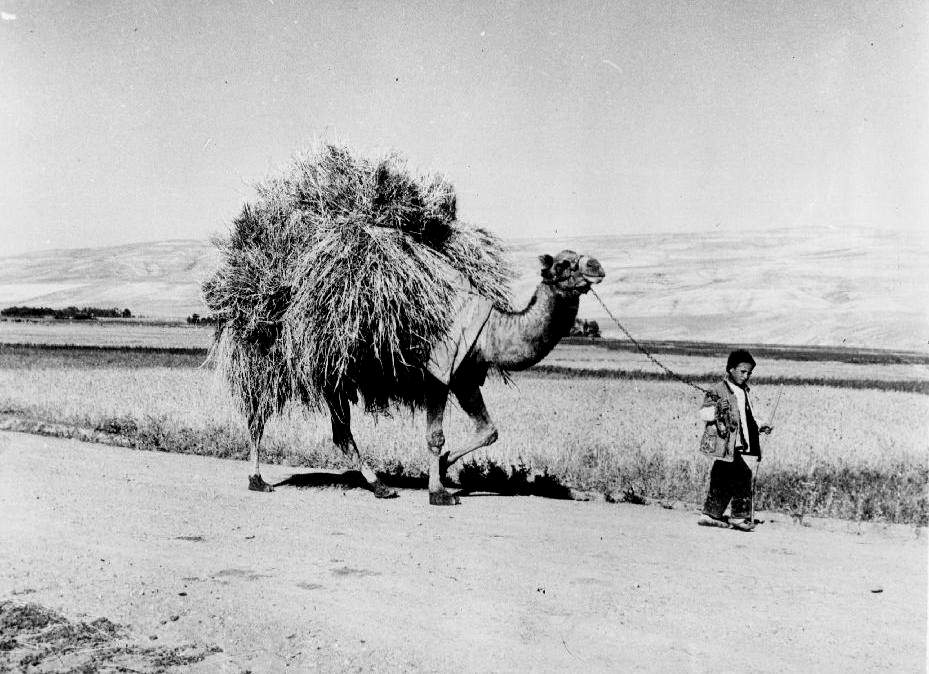
Iranian Ethnic Minorities: Azeris

Figure 1.--Here an Azeri boy leads a cammel with wheat straw in 1953. The wire service captioin read, "Harvest of hope: This camel carries wheat harvestyed in eastern Azerbaijan, along the Soviet Russian border in northern Iran, after farmers there had their first good harvest in four years. For the last three years a series of droughts and bitter winter had brought disaster to the half-million frmers of the region, whose min crop is sinrt wheat. Through the use of improved seed distributed the United States' Point Four Program. These farmers were able to get in a near-bumper crop last fall. The U.S. and Iran are cooperating in aextended program to increase food production in areas like Azerbaijan." The road the boy is on was probably built by American engineers during World War II.
|
|
Azeris are Iran's largest ethnic minority, Nearly 25 percent of Iranians are Azeris,although there are differences as to the precise count. Azeris tend to believe that the number is actually higher while the Farsi dominted Government insist that the officially published numbers are correct. The Azeris speak a Turkic languge. And importantly they are predomintely Shiite like the Farsi majority. This particulrly important in the Mulla-dominated Iranian theocracy. The Azeri population is concentrated in the northwest along the border with Azerbaijan. Azerbaijan is a former Soviet republic and during World war II the Soviet Union occupied northwest Iran. Iran and especually Azeri areas became a major conduit for American Lend Lease supplies to the Soviet Union. Considerable diplomatic wrangling wascnbeeded to convince the Soviets to leave after the war. The Iranian Azeris are ethnically and lingustically related to the people of Azerbaijan, but there are culural differences. The Azerbaijan people after seven decades of Soviet rule and lest intrusive Tsarist rule before that are more secular than their Iranian Azeri cousins. This has had the impact of reducung conflict with the conservative Iranian theocracy in Tehran. (A Supreme Leader was an ethnic Azeri.) Iranian Azeris seem more integrated into Iranian society, business, and politics than most of the other Iranian minorities. There are some grievances. While many Azeris say they are not treated as second-class citizens, there arre complaints. The primary one seems to be populart attitudes among Persians, occassiinaly reflected in the state-controlled media. A cartoon comparing Azeris to cockroaches caused widespread demonstrations in major Azeri cities (2006).
HBC

Navigate the Boys' Historical Clothing Web Site:
[Return to the Main Iranian minority page]
[Return to the Main Iranian page]
[Return to the Main Middle Eastern page]
[Introduction]
[Activities]
[Biographies]
[Chronology]
[Clothing styles]
[Countries]
[Topics]
[Bibliographies]
[Contributions]
[FAQs]
[Glossaries]
[Images]
[Links]
[Registration]
[Tools]
[Boys' Clothing Home]
Created: 1:13 AM 6/24/2012
Last updated: 1:14 AM 6/24/2012



